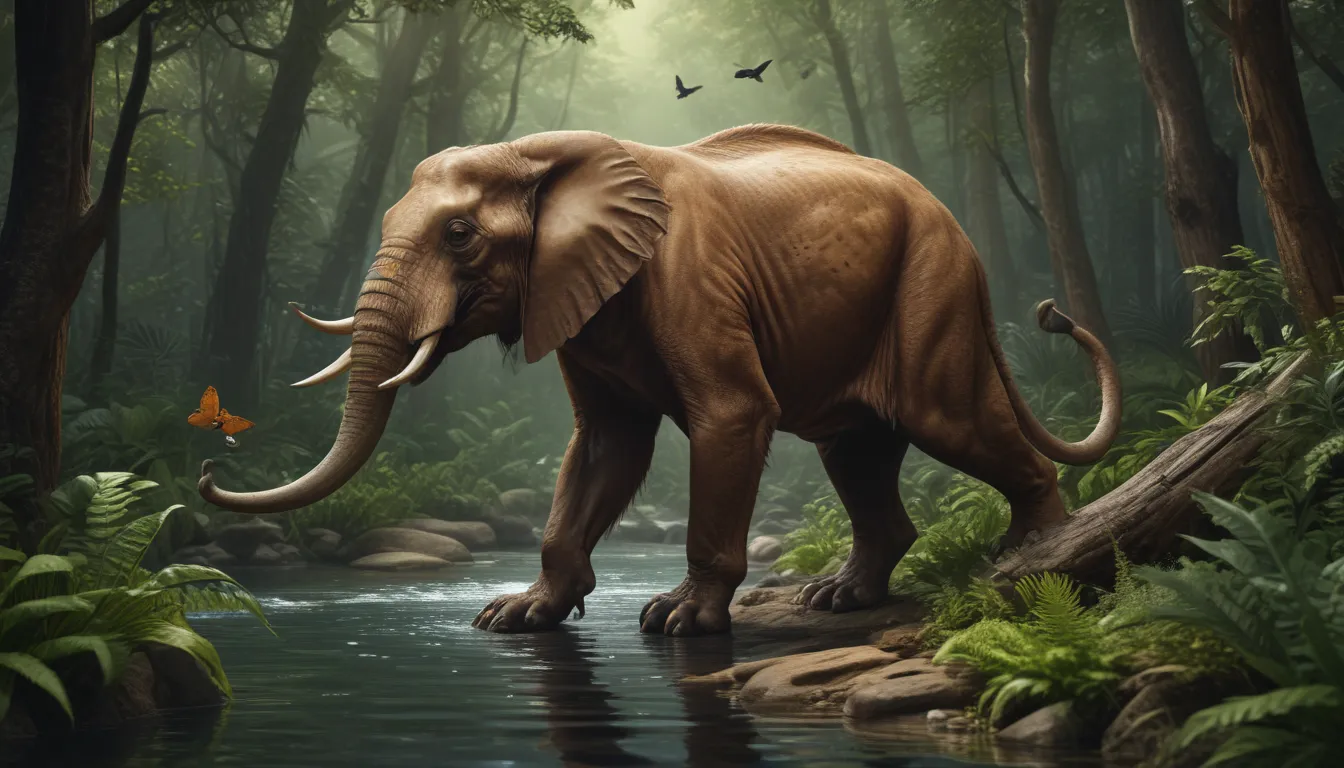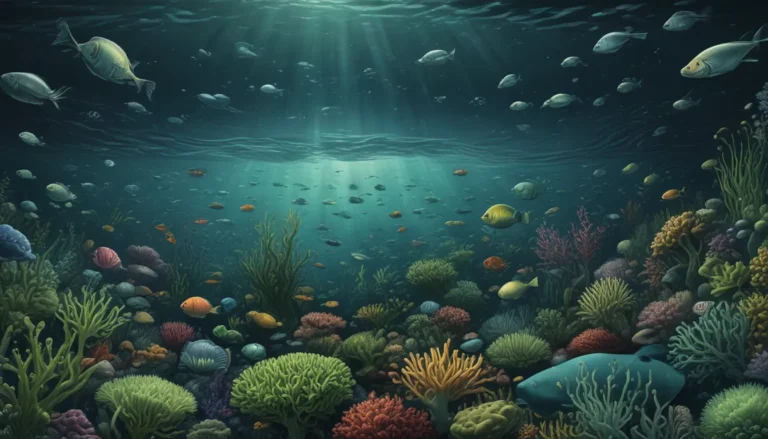A Note About Images: The images used in our articles are for illustration purposes only and may not exactly match the content. They are meant to engage readers, but the text should be relied upon for accurate information.
Animals are awe-inspiring creatures that have evolved and adapted over millions of years to survive in a myriad of environments. From the tiniest insects to the grandest mammals, each animal boasts unique and remarkable adaptations that enable them to flourish in their specific habitats. These adaptations, ranging from physical features to behavioral traits, showcase the incredible diversity and ingenuity present in the animal kingdom.
Delving into Animal Adaptations
Animals exhibit extraordinary adaptations like camouflage, echolocation, and hibernation that allow them to navigate the challenges of their surroundings. These adaptations serve as testaments to their remarkable ability to thrive in the wild. From luminous sea creatures to clever dolphins using tools, the animal kingdom showcases a blend of diversity and intelligence that is both astonishing and deserving of our admiration.
Camouflage: Nature’s Marvelous Disguise
One of the most mesmerizing adaptations found in the animal world is camouflage. Through the ability to blend seamlessly with their surroundings, animals can evade predators or enhance their hunting skills. The chameleon, for instance, can change its skin color to match its environment in a matter of seconds, showcasing a stunning display of nature’s artistry.
Super Sight: The Eagle’s Optical Prowess
The eagle is renowned for its exceptional vision, allowing it to spot prey from great distances. With eyes several times more powerful than humans, eagles have honed their sight to detect even the slightest movements on the ground. This keen sense of sight is a remarkable adaptation that underscores the eagle’s prowess as a hunter.
Sonic Superpowers: Bats and Echolocation
Bats have evolved a fascinating adaptation known as echolocation. By emitting high-frequency sounds and interpreting the echoes that bounce back, bats can navigate and locate objects in complete darkness. This unique ability aids them in finding prey and avoiding obstacles while in flight, demonstrating nature’s ingenuity at its finest.
Hibernation: Enduring the Winter Chill
Many animals have adapted to survive harsh winter conditions by entering a state of hibernation. During this period, metabolic processes slow down, and body temperature drops significantly, enabling animals like bears to conserve energy until food becomes more abundant. Hibernation is a vital adaptation that ensures their survival in challenging environments.
Bioillumination: The Radiant Creatures of the Deep Sea
Deep-sea creatures have developed a striking adaptation called bioillumination. By producing light through chemical reactions in their bodies, these organisms create their own mesmerizing bioluminescent glow. This adaptation serves various purposes, such as attracting prey, communication, and deterring predators, showcasing the enchanting diversity of life in the deep sea.
Thriving in Extreme Conditions: The Tenacity of Tardigrades
Tardigrades, also known as “water bears,” are microscopic organisms capable of surviving in some of the harshest environments on Earth. These resilient creatures can endure extreme temperatures, high pressure, and even the vacuum of space. By entering a state of cryptobiosis, where they dry out and suspend their metabolism, tardigrades exhibit an astounding ability to thrive in extreme conditions.
Powerful Adhesive: The Geckos’ Sticky Feat
Geckos possess a remarkable adaptation that allows them to effortlessly climb walls and ceilings. Their feet are adorned with millions of tiny hairs known as setae, which create adhesive forces between their feet and surfaces, enabling them to defy gravity and move with agility in their environment.
The Great Migration: An Epic Journey
Migration is a spectacular adaptation observed in many animal species. From birds embarking on thousands of miles-long journeys to wildebeest herds crossing vast terrains in search of fresh grazing lands, migration allows animals to optimize resources throughout the year. This incredible adaptation showcases the resilience and adaptability of various species in their quest for survival.
Tool Use: Demonstrating Intelligence in Action
Certain animal species exhibit impressive adaptability by using tools to enhance their survival skills. Birds, for example, use sticks or twigs to extract insects from tree bark, while dolphins have been observed using sponges as protective tools while foraging on the ocean floor. Such adaptive behaviors highlight the intelligence and problem-solving abilities of these remarkable creatures.
These nine astonishing facts about animal adaptations offer a glimpse into the diverse and ingenious ways in which animals navigate their environments. From the art of camouflage to the strategy of hibernation, each adaptation serves as a testament to the resourcefulness and resilience of animals in the face of ever-changing conditions. Exploring these adaptations not only sparks our fascination but also underscores the significance of conserving and safeguarding the natural habitats that nurture these remarkable beings.
Exploring the Marvels of Animal Adaptations
Understanding animal adaptations unveils a captivating insight into the rich tapestry of life on our planet. From the mesmerizing color-changing abilities of chameleons to the Arctic foxes’ camouflage in icy landscapes, these adaptations enable animals to thrive in their distinctive ecosystems. By studying these adaptations, scientists glean valuable insights into the evolutionary mechanisms that have shaped life on Earth, fostering a deeper appreciation for the wonders of the natural world.
FAQs: Unraveling the Mysteries of Animal Adaptations
-
How do animals adapt to their environments?
Animals adapt to their environments through physical changes, behavioral modifications, and genetic adjustments. These adaptations include camouflage, specialized body structures for obtaining food, mechanisms for surviving extreme temperatures, among others. -
Are animal adaptations permanent?
Animal adaptations can be both temporary and permanent, depending on the species and the adaptation in question. While some adaptations may be acquired through learning and behavior, others are inherited through genetic mutations and become permanent features over time. -
How do animals evolve new adaptations?
Animals evolve new adaptations through natural selection, where beneficial traits increase an individual’s chances of survival and reproduction, leading to their prevalence in a population over time. Genetic mutations also introduce new variations that confer advantages in specific environments, driving the evolution of new adaptations. -
Can animals lose adaptations?
Yes, animals can lose adaptations if they no longer provide an advantage in their environment. Through the process of natural selection, traits that are no longer beneficial may be phased out of a population as environmental conditions change or the adaptation becomes obsolete for survival. -
What are some examples of extraordinary animal adaptations?
Extraordinary animal adaptations include the axolotl’s regenerative abilities, the platypus’s electrolocation for prey detection, marine mammals’ diving prowess, and the elaborate courtship rituals of birds-of-paradise to attract mates, showcasing the diverse and fascinating adaptations in the animal kingdom. -
How do scientists study animal adaptations?
Scientists study animal adaptations through field observations, experiments, genetic analysis, and comparative anatomy. By examining the structure, behavior, and genetics of various species, scientists unravel the intricacies of adaptations and their role in aiding animals’ survival and reproduction.
Dive deeper into the enchanting realm of animal adaptations and unveil the extraordinary mechanisms that inspire awe and wonder. Embrace the boundless curiosity that drives us to explore the diverse and ingenious adaptations that shape the captivating world of animals, celebrating the resilience and resourcefulness of these remarkable beings in their quest for survival and success.
As you embark on your journey into the realm of animal adaptations, let your curiosity soar and your wonder ignite. Uncover the hidden marvels and intricate mechanisms that define the animal kingdom, and embrace the magic and awe that accompany each astonishing fact. As you delve deeper into the world of animal adaptations, remember to marvel at the resilience, intelligence, and creativity that define the remarkable creatures we share our planet with. So, seize the opportunity to explore, learn, and be inspired by the extraordinary world of animal adaptations that continues to captivate and enchant us all.



